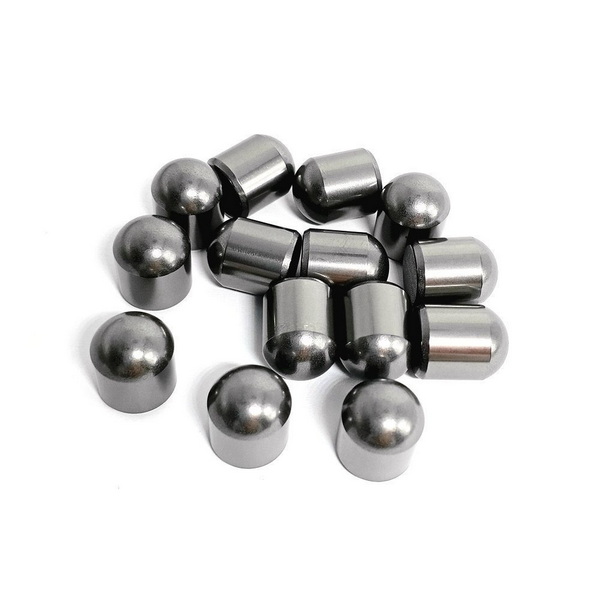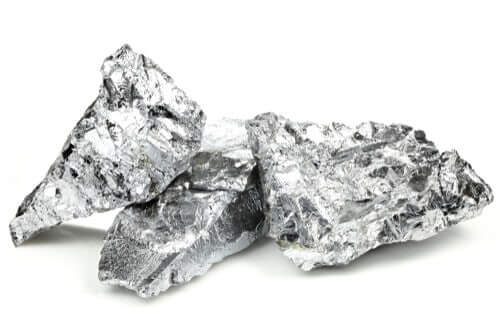Content Menu
● Understanding Tungsten Carbide and Its Hardness
>> What Is Hardness?
● Rockwell Hardness of Tungsten Carbide
>> Typical Rockwell Hardness Values
>> Why Use the Rockwell A Scale for Tungsten Carbide?
● Comparison of Tungsten Carbide Hardness with Other Scales
● Factors Affecting Tungsten Carbide Hardness
>> 1. Grain Size
>> 2. Cobalt Binder Content
>> 3. Sintering Temperature and Post-Treatments
● Mechanical Properties Related to Hardness
● Applications of Tungsten Carbide Based on Hardness
● Hardness Testing of Tungsten Carbide
>> Rockwell Hardness Test Method
>> Importance of Hardness Testing
● Additional Technical Insights on Tungsten Carbide Hardness
>> Thermal Stability and Hardness
>> Impact of Binder Materials Beyond Cobalt
>> Advances in Tungsten Carbide Composites
● Expanded Applications of Tungsten Carbide
>> Medical Industry
>> Aerospace
>> Electronics
● Enhanced Hardness Testing Techniques
>> Ultrasonic Hardness Testing
>> Microhardness Testing
>> Quality Control Automation
● Conclusion
● FAQ
>> 1. What is the typical Rockwell hardness range of tungsten carbide?
>> 2. Why is the Rockwell A scale used for tungsten carbide hardness testing?
>> 3. How does cobalt content affect tungsten carbide hardness?
>> 4. What is the relationship between grain size and hardness in tungsten carbide?
>> 5. How is tungsten carbide hardness tested in industry?
● Citations:
Tungsten carbide is renowned for its exceptional hardness and wear resistance, making it a critical material in industrial tooling, machining, and wear-resistant applications. Understanding its Rockwell hardness is essential for engineers, manufacturers, and users to select the right grade for specific tasks and to ensure quality control. This comprehensive article explores the Rockwell hardness of tungsten carbide, its comparison with other hardness scales, factors influencing its hardness, applications, and testing methods.

Understanding Tungsten Carbide and Its Hardness
Tungsten carbide (WC) is a chemical compound composed of tungsten and carbon atoms, typically in a ratio close to 94% tungsten and 6% carbon. It forms a hexagonal close-packed crystal structure that contributes to its remarkable mechanical properties, including hardness, stiffness, and compressive strength.
What Is Hardness?
Hardness is a material's resistance to permanent deformation, scratching, or indentation. It is a key property for materials used in cutting tools, wear parts, and abrasives. Hardness is measured using various scales, including:
- Mohs hardness scale: Qualitative scale from 1 (talc) to 10 (diamond).
- Vickers hardness (HV): Quantitative scale using a diamond pyramid indenter.
- Rockwell hardness (HR): Quantitative scale measuring penetration depth under specific loads, with various scales (A, B, C, etc.) depending on the material and indenter type.
Rockwell Hardness of Tungsten Carbide
Typical Rockwell Hardness Values
Tungsten carbide typically exhibits a Rockwell hardness on the A scale (HRA) ranging from 88 to 95. This corresponds approximately to 69 to 81 on the Rockwell C scale (HRC), which is commonly used for hardened steels.
- Rockwell A scale (HRA): Uses a diamond cone indenter with a 60 kg load, suitable for very hard materials like tungsten carbide.
- Rockwell C scale (HRC): Uses a diamond cone with a 150 kg load, mainly for hardened steels but sometimes used for comparison.
The Rockwell A hardness range of 88–95 HRA reflects tungsten carbide grades with varying cobalt binder contents and grain sizes, which influence hardness and toughness.
Why Use the Rockwell A Scale for Tungsten Carbide?
The Rockwell A scale is preferred because the lower test force (60 kg) reduces the risk of damaging the diamond indenter compared to the higher force used in the C scale (150 kg). It provides reliable hardness measurements for extremely hard materials like tungsten carbide without compromising the indenter or the sample.
Comparison of Tungsten Carbide Hardness with Other Scales
| Hardness Scale | Tungsten Carbide Typical Value | Notes |
| Mohs Scale | 9.0 – 9.5 | Second only to diamond (10) |
| Vickers Hardness (HV) | 1,500 – 3,000 HV | Depends on grain size and cobalt content |
| Rockwell Hardness A (HRA) | 88 – 95 HRA | Standard for tungsten carbide |
| Rockwell Hardness C (HRC) | ~69 – 81 HRC | Approximate equivalent for comparison |
Tungsten carbide's hardness approaches that of diamond, which is the hardest known material (Mohs 10, Vickers ~10,000 HV). Its Vickers hardness typically ranges from 2,400 to 3,000 HV depending on composition and processing.
Factors Affecting Tungsten Carbide Hardness
1. Grain Size
- Fine grains (0.2–0.8 µm): Higher hardness due to reduced intergranular spacing, ideal for cutting tools and precision wear parts.
- Coarse grains (>1 µm): Lower hardness but improved toughness, suitable for impact-heavy applications like mining tools.
2. Cobalt Binder Content
Tungsten carbide is often cemented with cobalt, which acts as a binder to hold WC grains together.
- Low cobalt content (3–6%): Maximizes hardness but increases brittleness.
- High cobalt content (10–20%): Improves toughness but reduces hardness.
3. Sintering Temperature and Post-Treatments
- Higher sintering temperatures (1,400–1,600°C) optimize density and hardness.
- Surface coatings such as titanium nitride (TiN) can further enhance surface hardness and wear resistance.
Mechanical Properties Related to Hardness
- Compressive Strength: Up to 2,700 MPa, higher than most metals, contributing to excellent wear resistance under load.
- Young's Modulus: Approximately 530–700 GPa, about three times that of steel, indicating extreme stiffness.
- Transverse Rupture Strength (TRS): Indicates toughness, which inversely correlates with hardness to some extent.
Applications of Tungsten Carbide Based on Hardness
Due to its hardness and wear resistance, tungsten carbide is widely used in:
- Cutting tools: End mills, drill bits, inserts maintain sharp edges at high temperatures.
- Mining equipment: Drill tips, crusher plates resist abrasive rock contact.
- Industrial wear parts: Nozzles, valves, bushings, and seal rings endure erosive fluids and mechanical wear.
- Jewelry: Wedding bands resist scratches and retain polish indefinitely.

Hardness Testing of Tungsten Carbide
Rockwell Hardness Test Method
- Indenter: Diamond cone (120° angle) for tungsten carbide.
- Load: 60 kg for Rockwell A scale.
- Procedure: Multiple indentations are made on a smooth, prepared surface, with spacing and edge distance controlled to avoid interference.
- Calibration: Use hardness blocks close to tungsten carbide hardness for accuracy.
- Result: Average of multiple readings, with tolerances typically ±0.5 HRA.
Importance of Hardness Testing
- Ensures material meets specifications for wear resistance and durability.
- Critical for quality control in manufacturing tungsten carbide parts.
- Helps select appropriate grades for different applications based on hardness and toughness requirements.
Additional Technical Insights on Tungsten Carbide Hardness
Thermal Stability and Hardness
Tungsten carbide maintains its hardness even at elevated temperatures, which is crucial for cutting tools used in high-speed machining. Its hardness retention at temperatures up to 500°C makes it superior to many other hard materials that soften under heat.
Impact of Binder Materials Beyond Cobalt
While cobalt is the most common binder, other binders like nickel or iron can be used to tailor the hardness and toughness balance. Nickel binders can improve corrosion resistance but may slightly reduce hardness compared to cobalt.
Advances in Tungsten Carbide Composites
Recent developments include nano-structured tungsten carbide composites that exhibit enhanced hardness and toughness simultaneously, overcoming traditional trade-offs.
Expanded Applications of Tungsten Carbide
Medical Industry
Tungsten carbide is used in surgical instruments and dental tools due to its hardness and biocompatibility, ensuring precision and durability.
Aerospace
Components exposed to extreme wear and heat, such as turbine blades and engine parts, benefit from tungsten carbide coatings or inserts.
Electronics
Tungsten carbide is used in manufacturing semiconductor equipment parts that require high wear resistance and dimensional stability.
Enhanced Hardness Testing Techniques
Ultrasonic Hardness Testing
Non-destructive ultrasonic methods are being developed to measure hardness and detect internal flaws in tungsten carbide parts.
Microhardness Testing
Microhardness tests using Vickers or Knoop indenters provide localized hardness measurements, useful for coatings and thin layers.
Quality Control Automation
Automated hardness testing systems with robotic arms and AI analysis improve consistency and throughput in manufacturing.
Conclusion
Tungsten carbide is one of the hardest industrial materials available, with a Rockwell hardness typically ranging from 88 to 95 HRA, reflecting its exceptional wear resistance and durability. Its hardness is influenced by grain size, cobalt binder content, and processing conditions. The Rockwell A scale is the standard for measuring tungsten carbide hardness, providing reliable and accurate results essential for quality control and material selection. This outstanding hardness, combined with high compressive strength and stiffness, makes tungsten carbide indispensable in cutting tools, mining equipment, and wear-resistant components.

FAQ
1. What is the typical Rockwell hardness range of tungsten carbide?
Tungsten carbide typically has a Rockwell hardness between 88 and 95 HRA, corresponding roughly to 69 to 81 HRC.
2. Why is the Rockwell A scale used for tungsten carbide hardness testing?
The Rockwell A scale uses a lower test force (60 kg) and a diamond indenter, which prevents damage to the indenter and provides accurate hardness readings for very hard materials like tungsten carbide.
3. How does cobalt content affect tungsten carbide hardness?
Lower cobalt content increases hardness but reduces toughness, while higher cobalt content improves toughness at the expense of hardness.
4. What is the relationship between grain size and hardness in tungsten carbide?
Finer grains result in higher hardness and wear resistance, while coarser grains improve toughness but lower hardness.
5. How is tungsten carbide hardness tested in industry?
Hardness is tested using the Rockwell hardness tester on the A scale, with careful specimen preparation, multiple indentations, and calibration against standard hardness blocks.
Citations:
[1] https://www.matweb.com/search/datasheet.aspx?matguid=e68b647b86104478a32012cbbd5ad3ea&n=1
[2] https://www.carbide-part.com/blog/tungsten-carbide-hardness-vs-diamond/
[3] https://www.linde-amt.com/resource-library/articles/tungsten-carbide
[4] https://www.harcourt.co/overview_documents/Tungsten%20Carbide%20data%20sheet.PDF
[5] https://en.wikipedia.org/wiki/Tungsten_carbide
[6] https://www.buehler.com/blog/rockwell-hardness-testing/
[7] https://www.carbide-products.com/blog/hardness-testing-of-carbide/
[8] https://www.zhongbocarbide.com/what-is-the-hardness-of-tungsten-carbide.html
[9] https://www.carbide-part.com/blog/comprehensive-guide-to-testing-tungsten-carbide-rods-key-steps-to-ensure-quality-and-performance/
[10] https://www.yatechmaterials.com/en/technology/hardness-of-tungsten-carbide/
[11] https://carbideprocessors.com/pages/carbide-parts/tungsten-carbide-properties.html
[12] https://www.bangerter.com/en/tungsten-carbide
[13] http://hardmetal-engineering.blogspot.com/2011/
[14] https://www.bladeforums.com/threads/carbide-hardness-data.1514372/
[15] https://www.zhongbocarbide.com/how-hard-is-tungsten-carbide-on-the-hardness-scale.html
[16] http://hardmetal-engineering.blogspot.com/2011/04/what-sort-of-hardness-can-be-achieved.html
[17] http://www.tungsten-carbide.com.cn/tungsten-carbide-hardness-conversion-table.html
[18] https://www.mitsubishicarbide.net/contents/mmus/enus/html/product/technical_information/information/hardness.html
[19] https://www.nist.gov/publications/effect-steel-and-tungsten-carbide-ball-indenters-rockwell-hardness-tests
[20] https://www.mosercompany.com/tungstencarbide.htm
[21] https://heatford.com/sertlik_donusum_tablosu.pdf
[22] https://konecarbide.com/tungsten-vs-tungsten-carbide-differences-explained/
[23] https://www.makeitfrom.com/material-properties/Tungsten-Carbide-WC
[24] https://www.generalcarbide.com/wp-content/uploads/2019/04/GeneralCarbide-Designers_Guide_TungstenCarbide.pdf
[25] https://wenlijituan.en.made-in-china.com/product/VEBUoNYjggrJ/China-Yg20-C13-Tungsten-Carbide-Rods-with-Rockwell-Hardness-58.html
[26] https://www.dymetalloys.co.uk/what-is-tungsten-carbide
[27] https://www.imetra.com/tungsten-carbide-material-properties/
[28] https://www.govinfo.gov/content/pkg/GOVPUB-C13-PURL-LPS15213/pdf/GOVPUB-C13-PURL-LPS15213.pdf
[29] https://stock.adobe.com/search?k=tungsten+carbide
[30] http://www.nicrotec.com/welding-consumables/tungsten-carbide-alloys-nicrotec/products.html?c=1&g=13
[31] https://www.diva-portal.org/smash/get/diva2:1237216/FULLTEXT01.pdf
[32] https://www.imeko.org/publications/tc5-2004/IMEKO-TC5-2004-016.pdf
[33] https://www.sciencedirect.com/science/article/pii/026343689190025J
[34] https://www.basiccarbide.com/tungsten-carbide-grade-chart/
[35] https://www.jota.ch/fileadmin/images/Flyer_aktuell/FINAL_-_Spot_-_Hartmetall_-_EN_LQ.pdf
[36] https://en.wikipedia.org/wiki/Rockwell_hardness_test
[37] https://www.gettyimages.com/photos/tungsten-carbide
[38] https://www.ruihantools.com/technic-data/understanding-the-hardness-of-carbide-end-mills.html
[39] https://www.zhongbocarbide.com/how-hard-is-tungsten-carbide-hrc.html
[40] https://carbideprovider.com/tungsten-carbide-rod-for-cutting-tools/
[41] https://www.topndt.sk/sites/default/files/prilohy/hardness_testing_faq_english_0_2.pdf
[42] https://tuncomfg.com/about/faq/
[43] https://www.tungstenman.com/tungsten-carbide-hardness.html
[44] https://carbideprovider.com/tungsten-carbide-indexable-inserts-202407252/
[45] https://www.metkon.com/pics/files/hardness-testing-guide.pdf
[46] https://cowseal.com/tungsten-vs-tungsten-carbide/
[47] http://www.carbidetechnologies.com/faq/what-is-hardness/
[48] http://www.tungsten-carbide.com.cn
[49] https://www.mdpi.com/2075-4701/11/12/2035
[50] https://www.pennunited.com/sites/default/files/PS%2000002%20Grade%20Sheet%20Rev%208.pdf
[51] https://www.qualitytestinginc.com/rockwell-hardness-test.html
[52] https://shop.machinemfg.com/the-pros-and-cons-of-tungsten-carbide-a-comprehensive-guide/
















